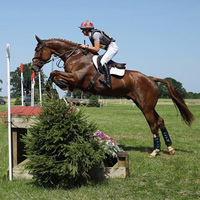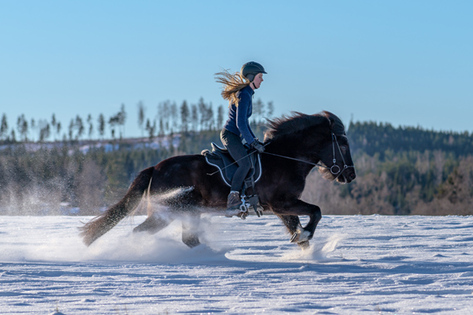
Ad-Lib vs Trickle Feeding - What's Best For Your Horse?
Equestrian Advice & Guides Beginners Advice
Build your business profile for FREE and expose your services to thousands of potential clients!
Create my profile now!
Now that the weather has made a turn for the worse, the nights are drawing in and we're facing lockdown round 2, typically, we are spending less time moving around outside and our cardiovascular fitness levels can drop very quickly unless we keep on top of it.
Cardio is a bit like marmite; you either love it or hate it!
From my experience, when you tell someone they need to improve their cardio, they instantly think they have to run for miles on end, and the thought of that isn't very pleasant, especially when it's dark, cold and damp outside. Now, if you are a person who enjoys running and find it relieves stress, then carry on running!

However, if you are hitting the pavements and running for a few miles each day because you think it's going to improve your cardio and help control your weight, I hate to be the bearer of bad news but this style of cardio isn’t going to be beneficial to you for very long. Running at one pace for a length of time will improve your cardio to a certain extent, but once your body has become accustomed to this workload, your fitness levels will very quickly plateau. It’s also not very effective for weight loss.
Now, the levels of fitness required will vary depending on the discipline you take part in, and will determine what style of cardio will be most beneficial to you.
For example, if you are a leisure rider who mostly hacks and occasionally competes in low level dressage, then LSD (Long Slow Duration) training will be sufficient. This is your lower intensity exercise, such as brisk walking, cycling or swimming, working at around 60-70% effort, so nothing too intense and you should be able to hold this pace for an hour or more. Whilst working out at this level of intensity, you should be able to hold a full conversation – this is a good test for monitoring your intensity level.

If you compete in Riding Club activities, or lower level show jumping and dressage, then you need to increase the intensity slightly, so that you’re working at around 70-80% effort. At this level, you should not be able to hold a full conversation but should be able to finish a sentence. There a few ways you can achieve this level of intensity, whether it be whilst cycling or swimming, for example; set a pace you can maintain for a long period of time (45/60mins), then after a minute at this pace, increase the intensity for a short period (30/40sec) by swimming/cycling faster, then return to your original pace. Repeat every minute for 7 minutes and then take a break.
This is an introduction to interval training. You are working the body at a higher intensity for short periods to condition the body to withstand this workload, but during the rest intervals, the heart rate never fully recovers, so you are constantly improving your cardiovascular capacity.
If you compete regularly or event, you need to focus on your cardio a bit more, so your body is conditioned to withstand the demands of show jumping followed by cross country. The best way to condition our bodies to withstand these anaerobic demands and increase our stamina is through interval training, in the form of High Intensity Workouts - often known as HIIT.

This type of training involves working the body at a high intensity, raising the heart rate and body temperature rapidly, but only for short periods of time. This is followed by regular short breaks to allow the body to partially recover; however, you don’t want the heart rate to return to resting rate throughout the session. This is the same concept as discussed above, but at a higher level.
To achieve this, we would perform a circuit of 3-5 high intensity exercises for approximately 45 seconds each, with short rests of around 15 seconds in between each exercise and a longer rest of 1 minute after each circuit. Depending on your current abilities and fitness levels, you want to look at completing 7 rounds. If you are just starting to work on your cardio, then I suggest you start with the training mentioned above for the lower intensity levels and build up to this.

Including a short HIIT workout into your fitness regime 2-3 times a week will dramatically improve your body's stamina and capabilities to perform under anaerobic conditions.
An example of a HIIT workout would be:
This higher intensity workout matches the workload placed on the body during a show jumping or cross country round and is therefore more beneficial than running at one steady pace for long periods of time. This method of training is also a great way to burn a lot of calories over a short period of time.
For more great tips on equestrian fitness and handy exercises to try, follow Natalie @NMA.fitness on Facebook and Instagram.

